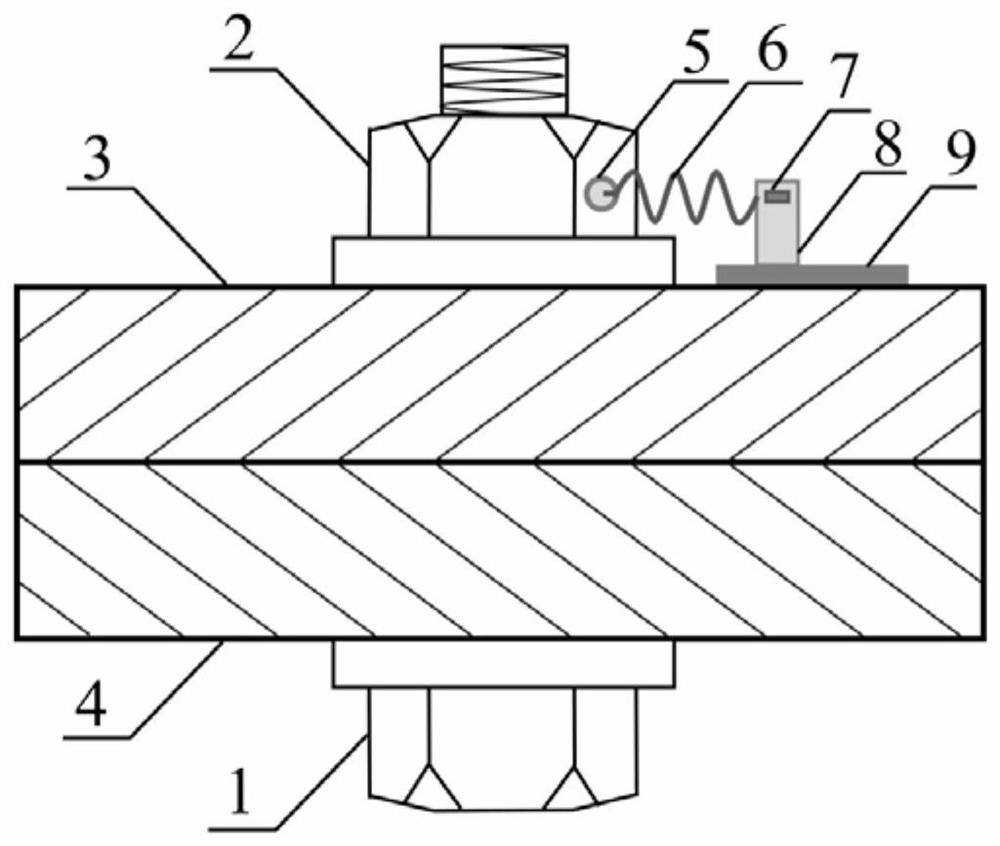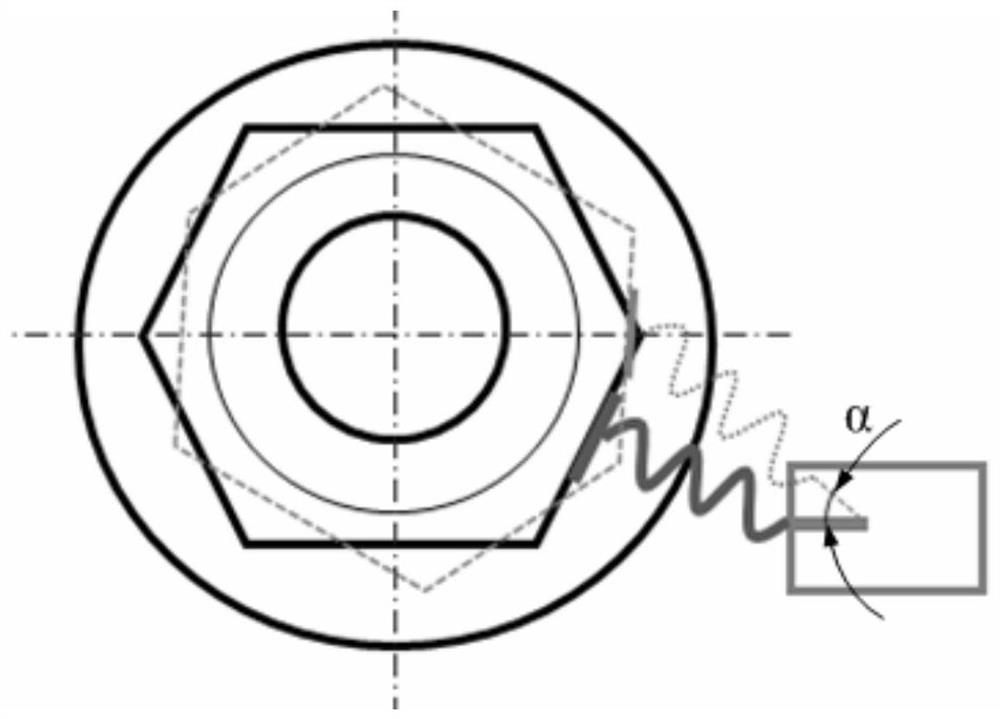Bolt looseness sensing device based on piezoelectric traction effect
A technology of bolt loosening and traction effect, which is applied in the direction of using electric/magnetic devices to transmit sensing components, measuring devices, and testing of mechanical components, and can solve problems such as high energy consumption, high cost, and complex design of monitoring technology
- Summary
- Abstract
- Description
- Claims
- Application Information
AI Technical Summary
Problems solved by technology
Method used
Image
Examples
specific Embodiment approach 1
[0022] Specific implementation mode one: the following combination Figure 1 to Figure 3 , Figure 5 and Figure 6 To illustrate this embodiment, a piezoelectric traction effect bolt looseness sensing device described in this embodiment includes a connecting end piece 5, a spring 6, a piezoelectric piece 7, a metal shrapnel 8, a bottom bracket 9 and a signal processing module;
[0023] A signal processing module is embedded inside the bottom bracket 9, and a metal shrapnel 8 is vertically arranged on the upper surface of the bottom bracket 9. The piezoelectric sheet 7 is attached to the upper end of the metal shrapnel 8, and the suspended end of the metal shrapnel 8 is connected to the tail end of the spring 6. The head end is fixedly provided with a connection end piece 5, and the connection end piece 5 is pressed against the side of the nut;
[0024] When the bolt is loose, the connecting end piece 5 swings along with the nut, the connecting end piece 5 drives the spring 6...
specific Embodiment approach 2
[0030] Specific implementation mode two: the following combination Figure 4 This embodiment is described. The difference between this embodiment and Embodiment 1 is that the head end of the spring 6 connected to the connecting end piece 5 is an equidistant helical structure, and is preferably integrally formed. The equidistant helical structure of the spring has an excellent stable structure and a large contact surface, making the connection more reliable.
[0031] The end of the conventional spring is a single circle, and the truncation often has a protruding end, which is not conducive to the connection with the connecting end piece 5 and the smoothness of being pressed on the nut.
[0032] In this embodiment, the first end of the spring 6 is changed to an equidistant helical structure to increase the contact area with the connecting end piece 5, so that the force transmitted by the spring 6 can be more smoothly and positively supported on the nut 2 through the connecting e...
PUM
 Login to View More
Login to View More Abstract
Description
Claims
Application Information
 Login to View More
Login to View More - R&D
- Intellectual Property
- Life Sciences
- Materials
- Tech Scout
- Unparalleled Data Quality
- Higher Quality Content
- 60% Fewer Hallucinations
Browse by: Latest US Patents, China's latest patents, Technical Efficacy Thesaurus, Application Domain, Technology Topic, Popular Technical Reports.
© 2025 PatSnap. All rights reserved.Legal|Privacy policy|Modern Slavery Act Transparency Statement|Sitemap|About US| Contact US: help@patsnap.com



